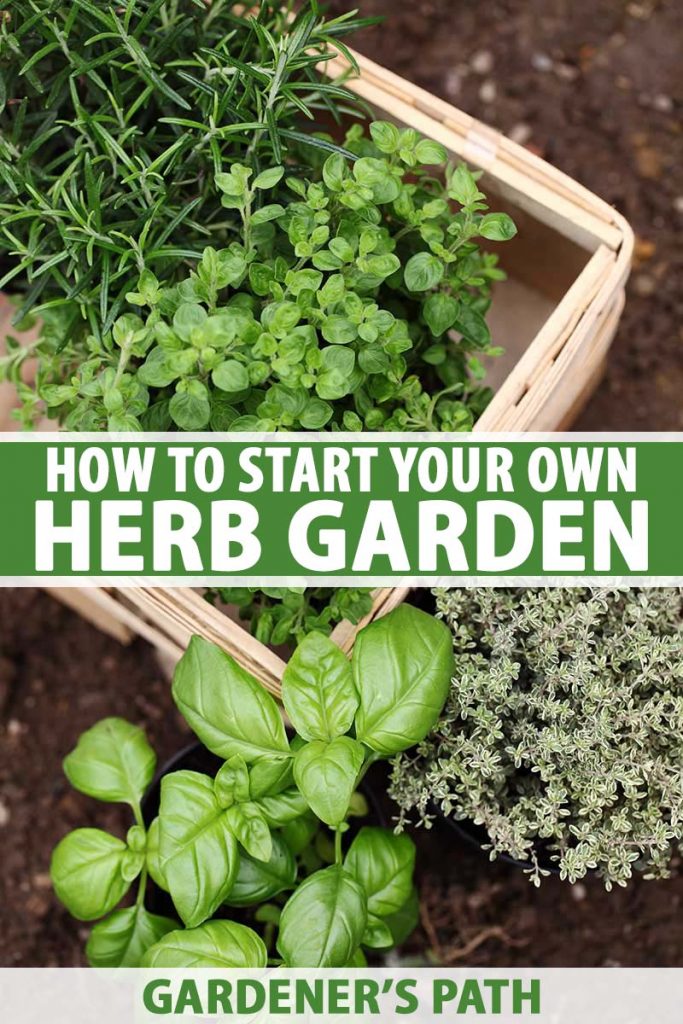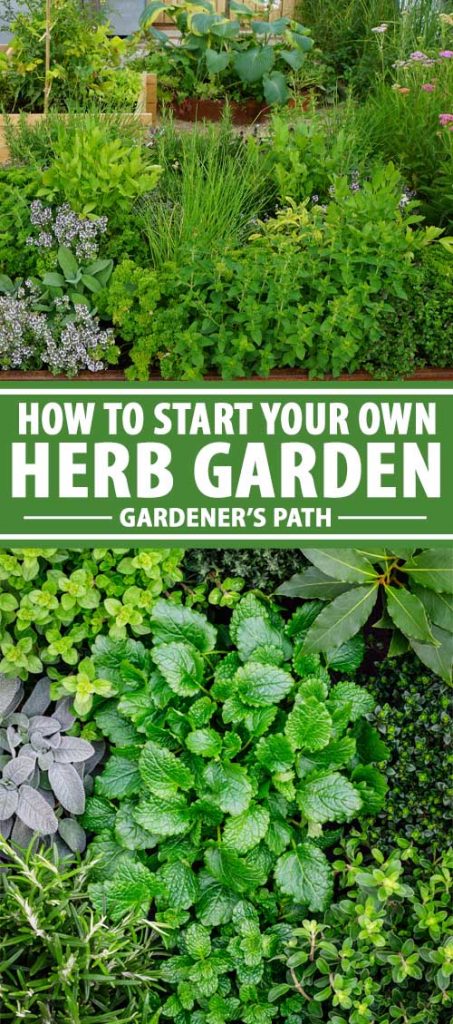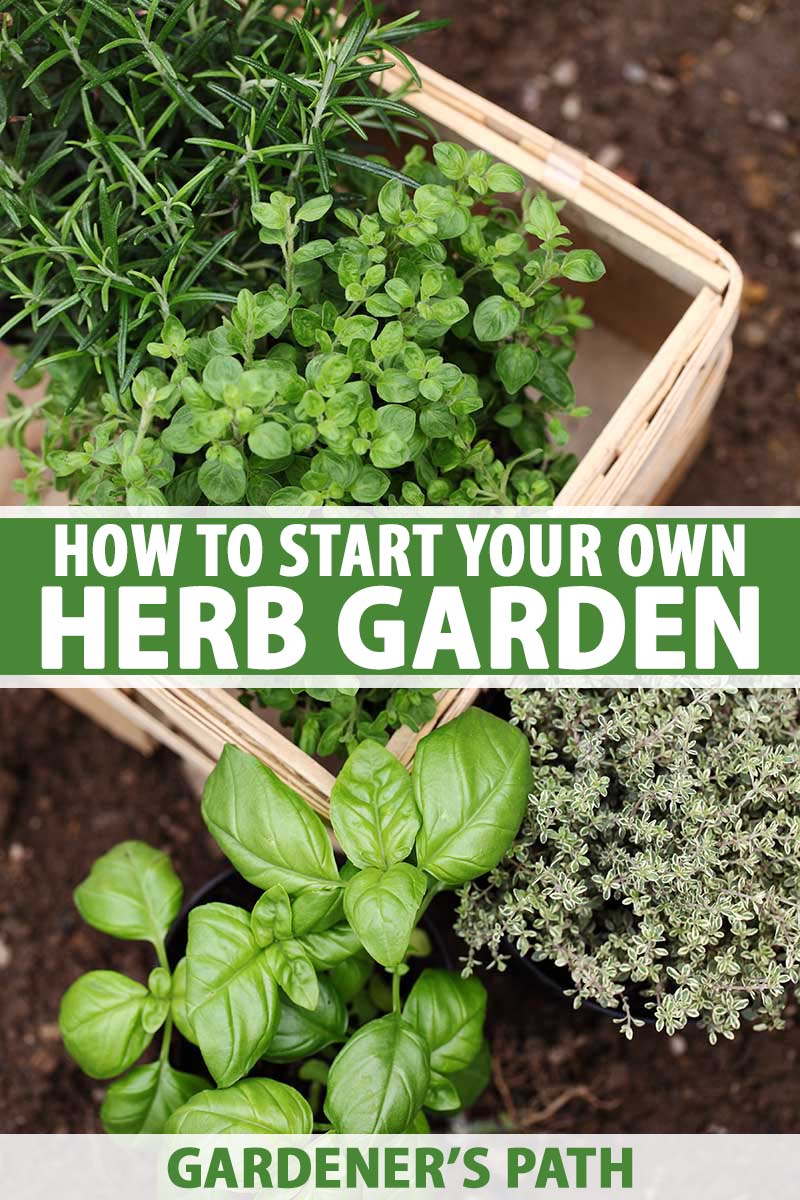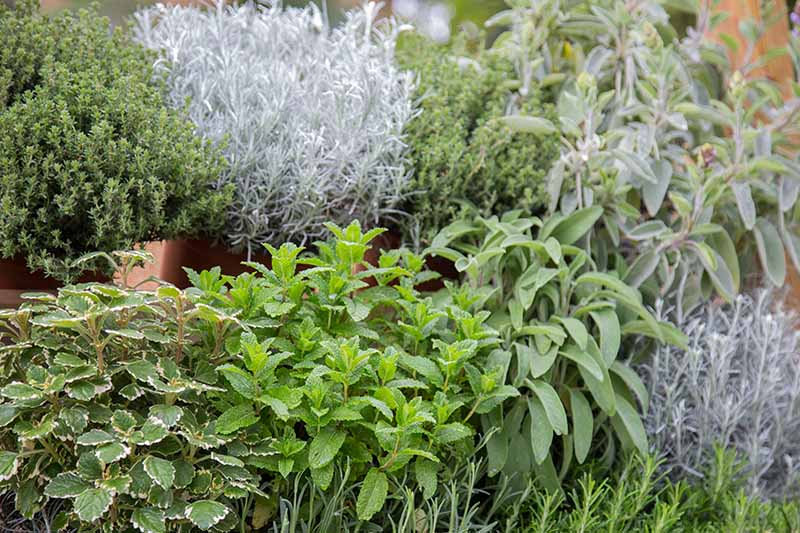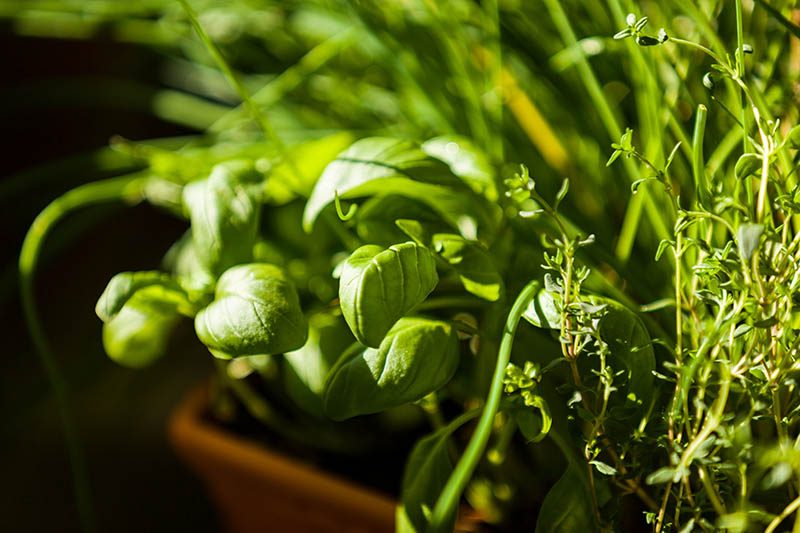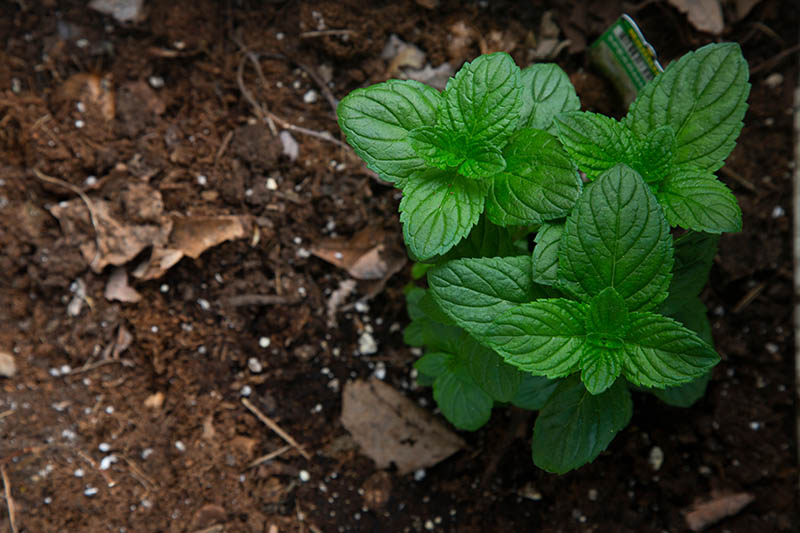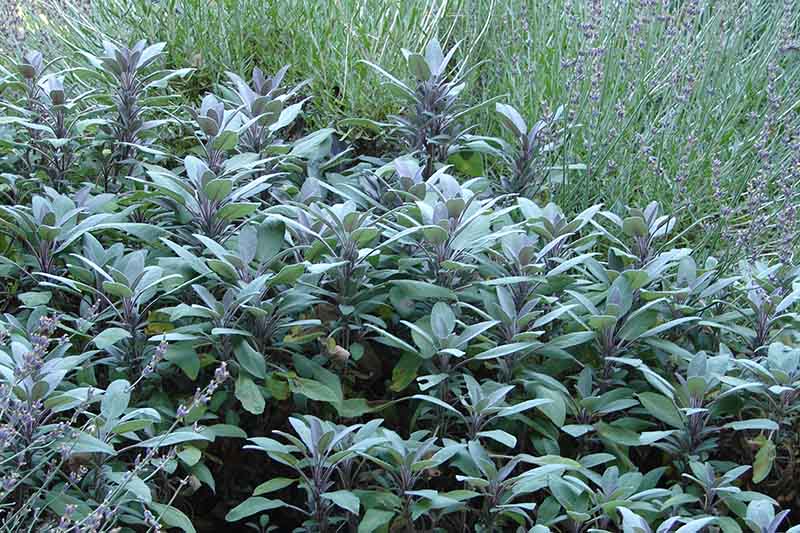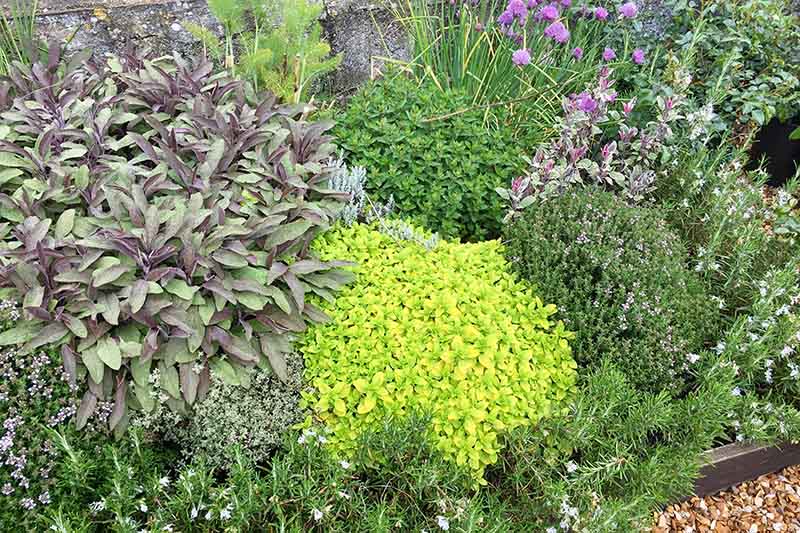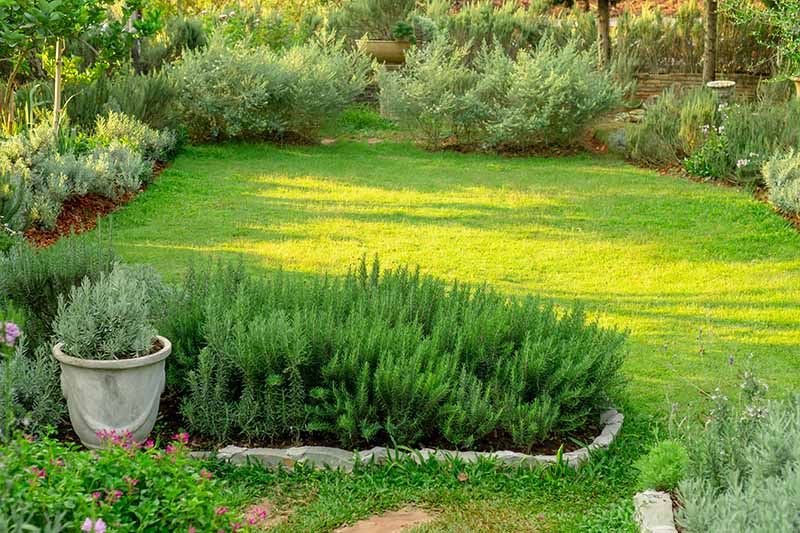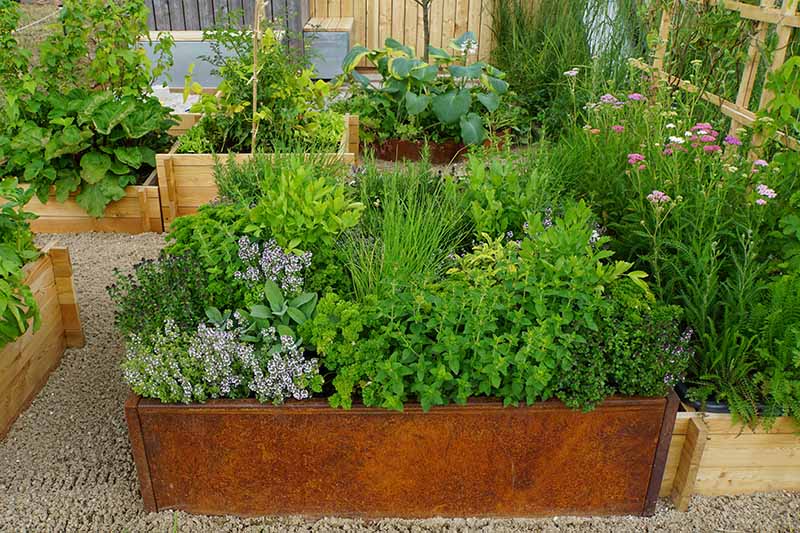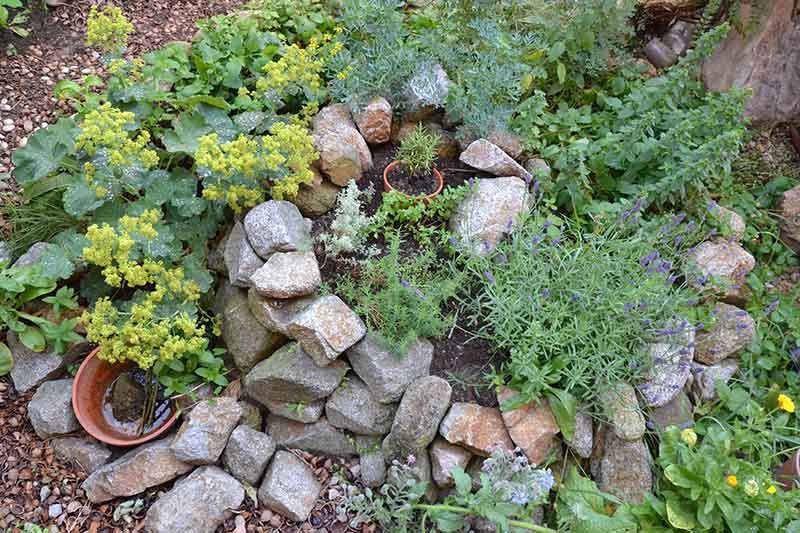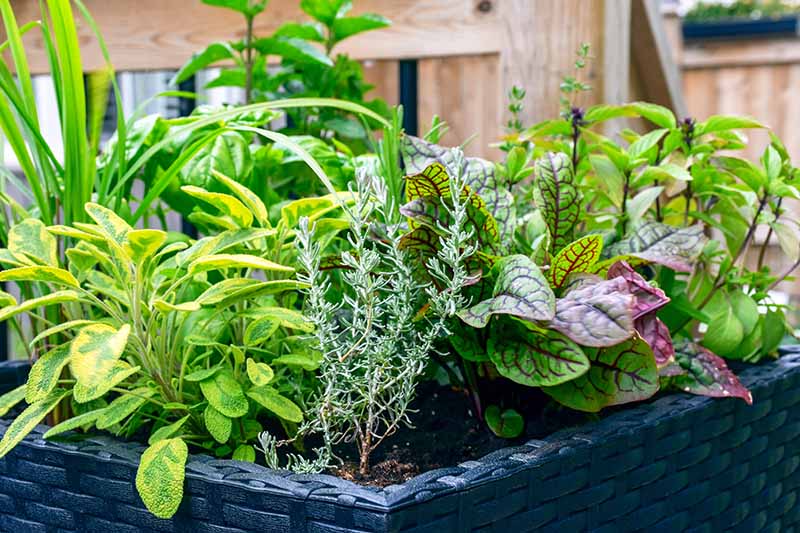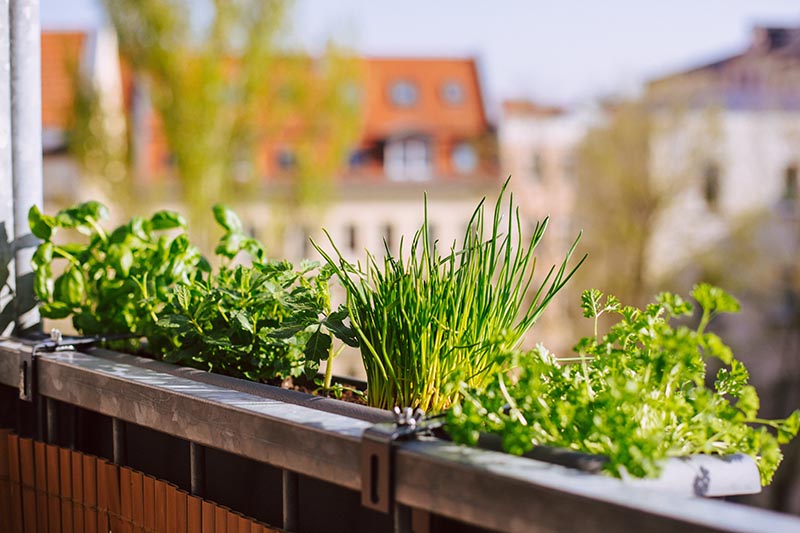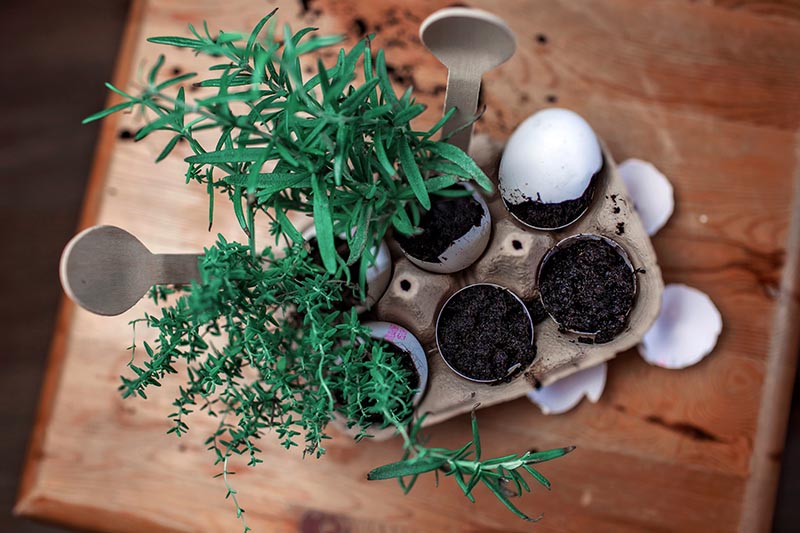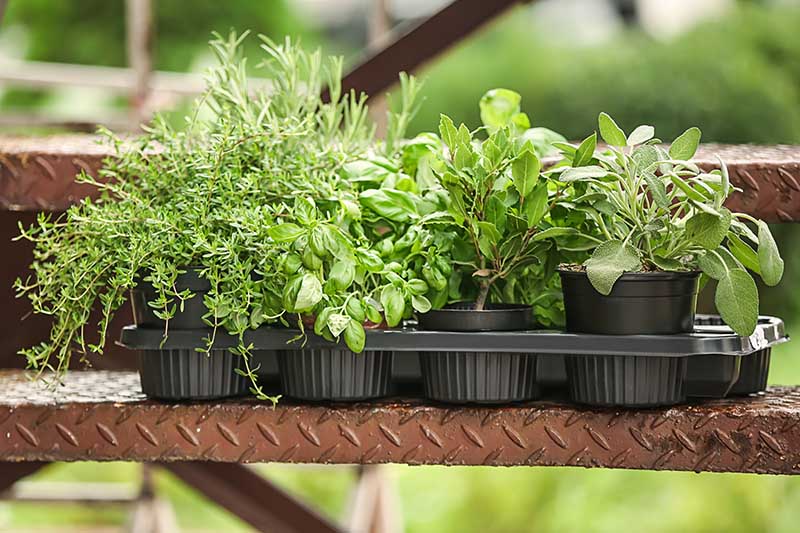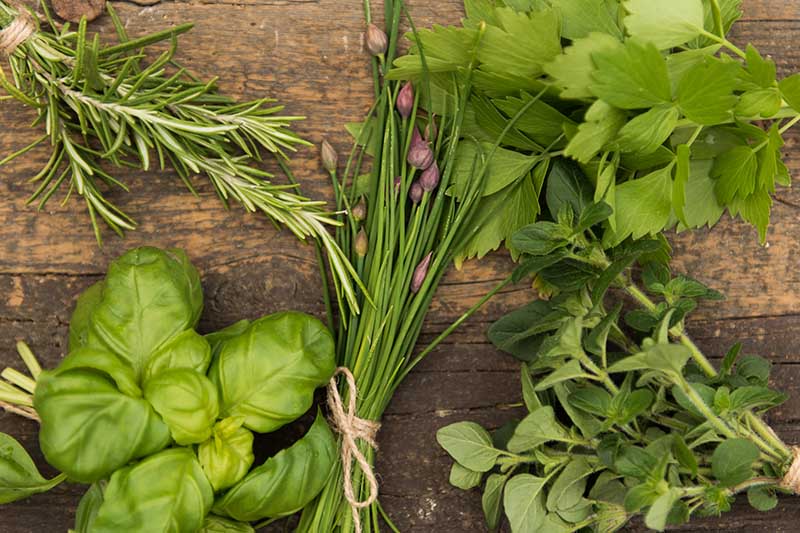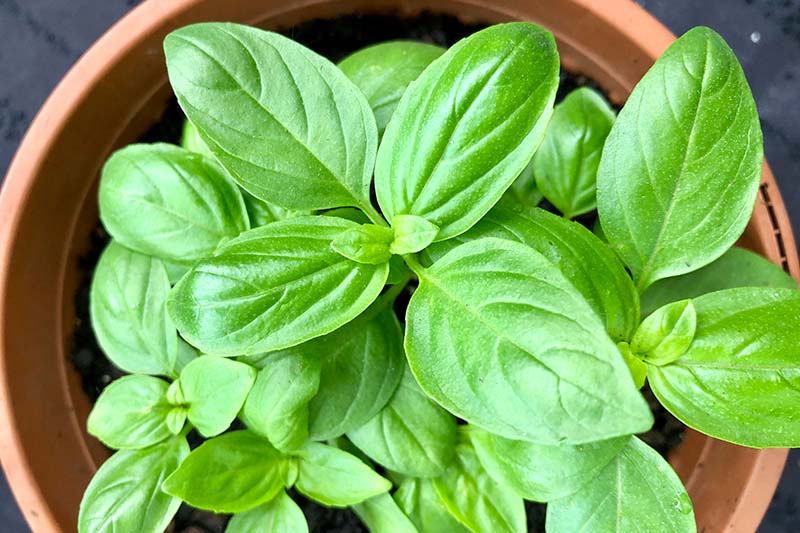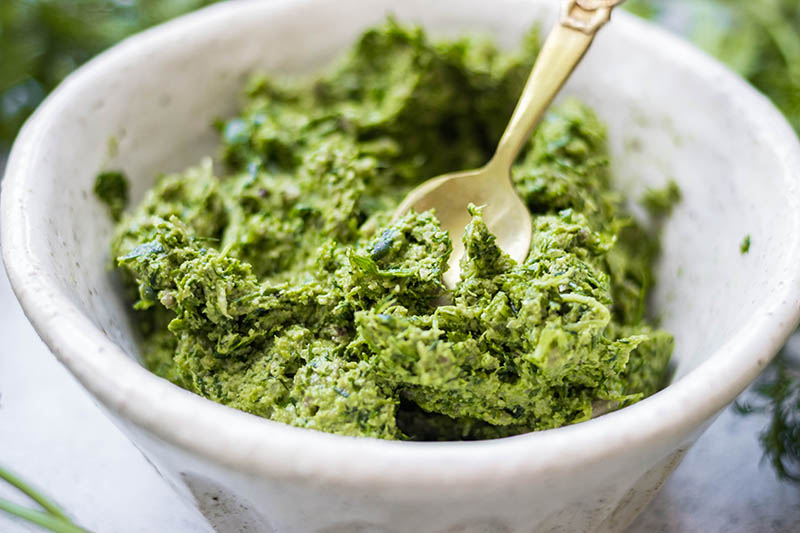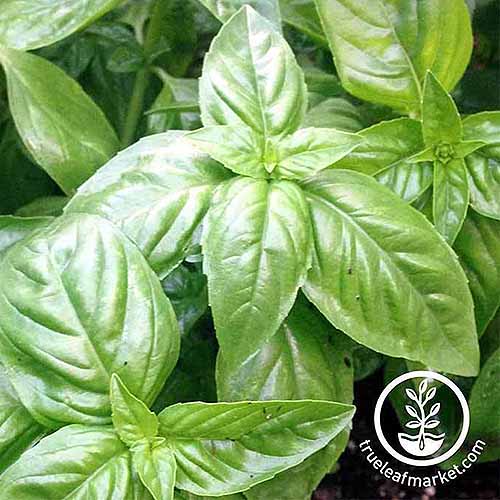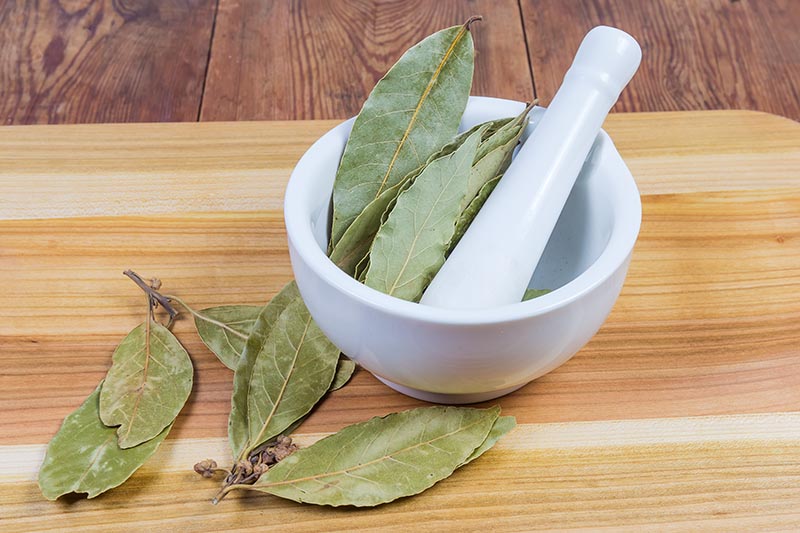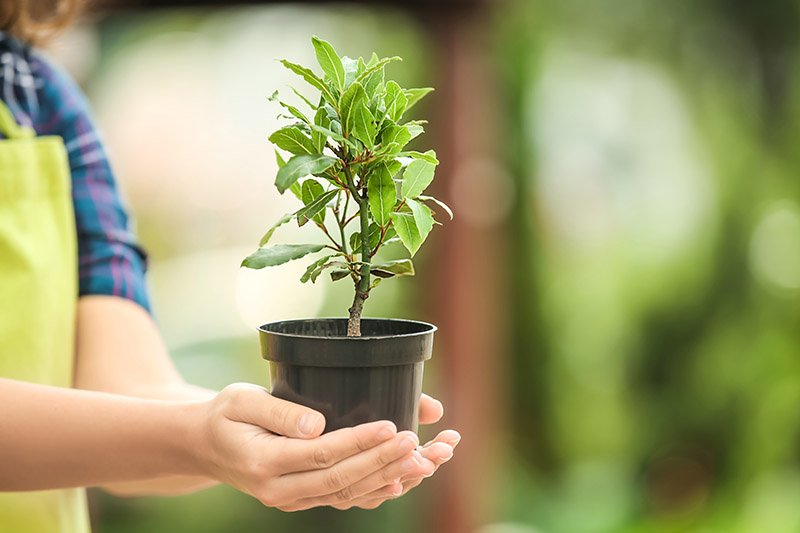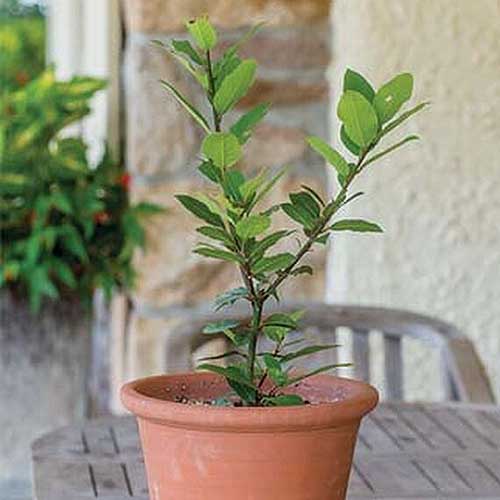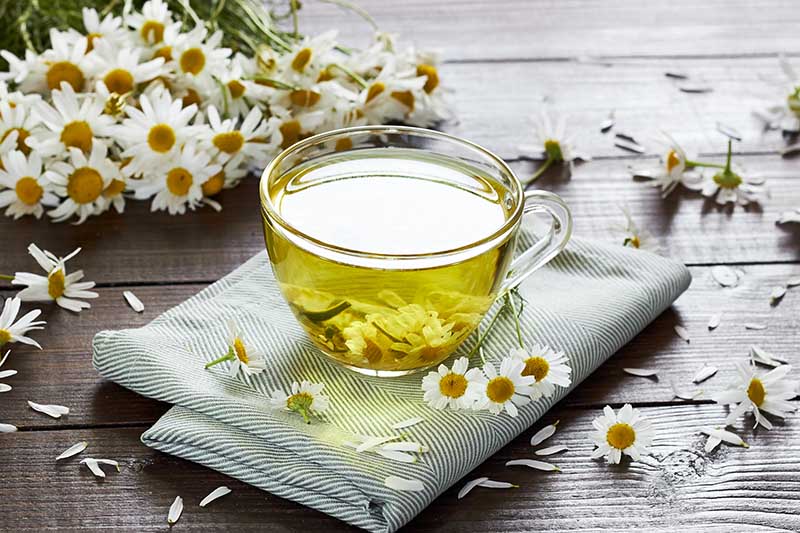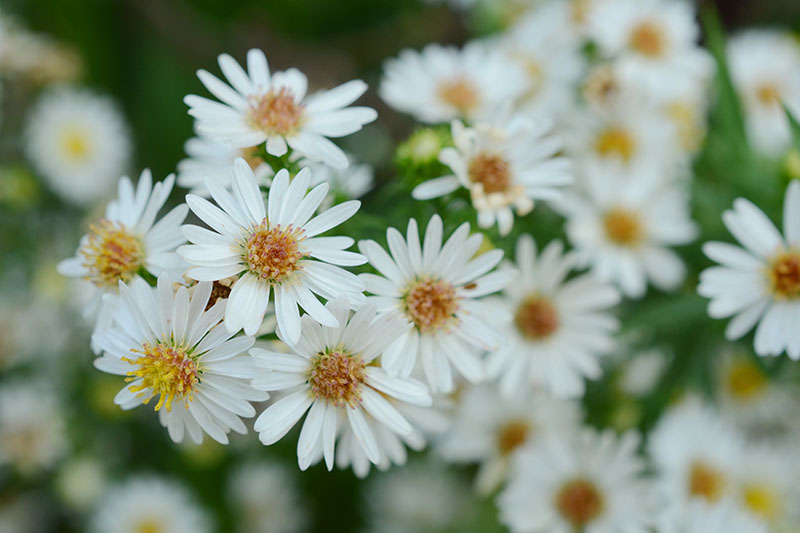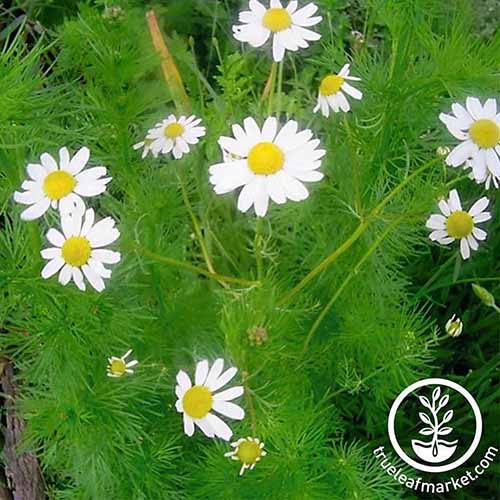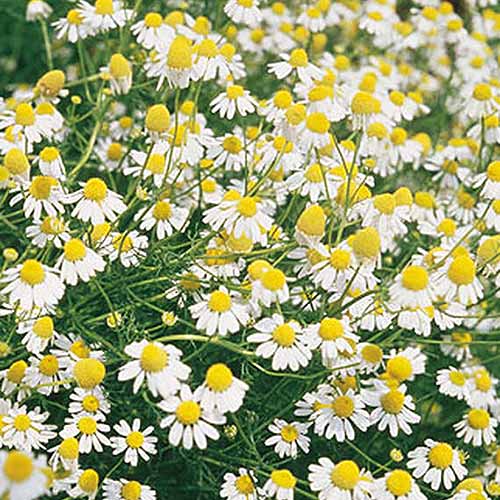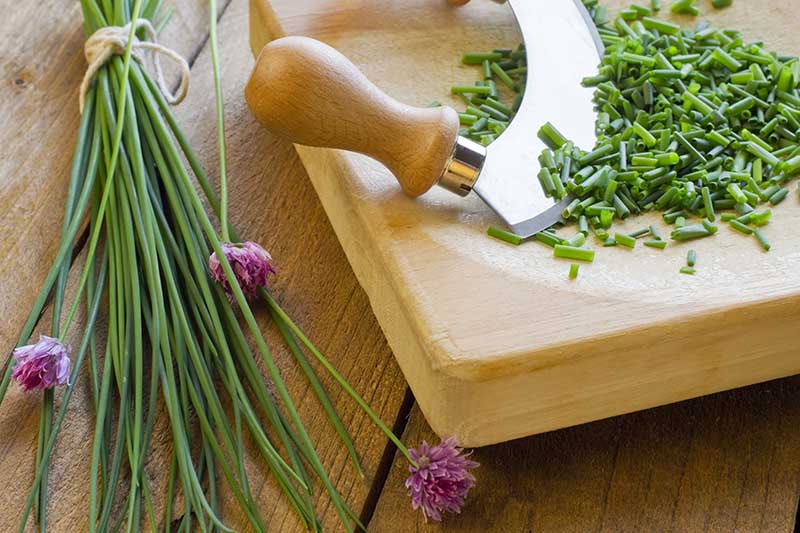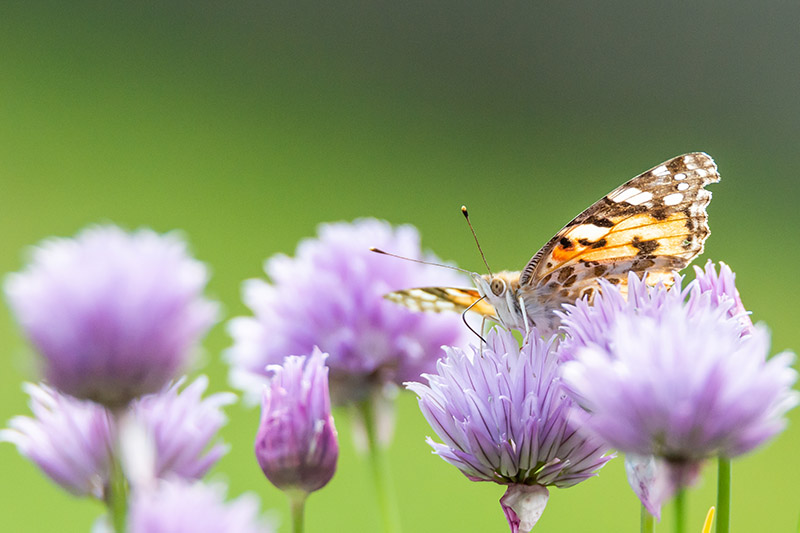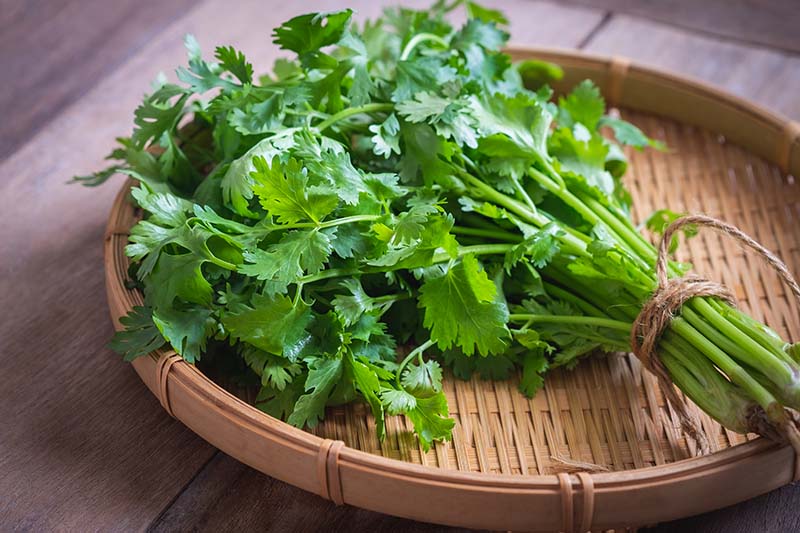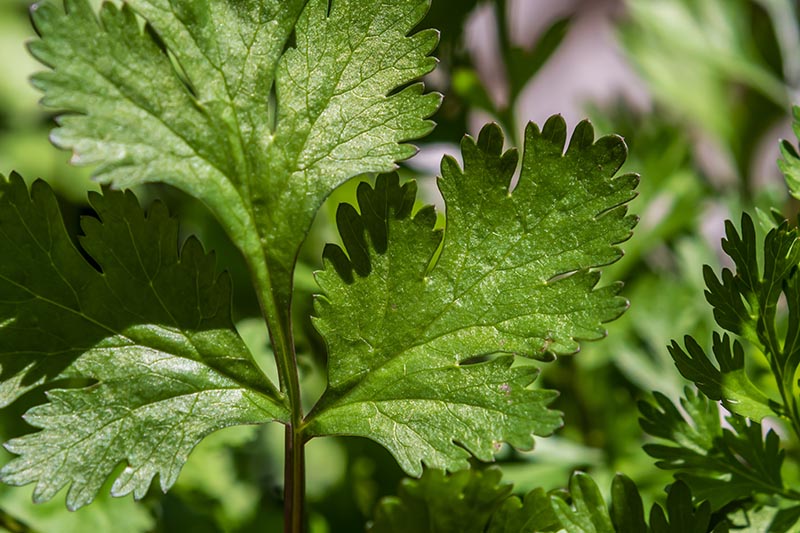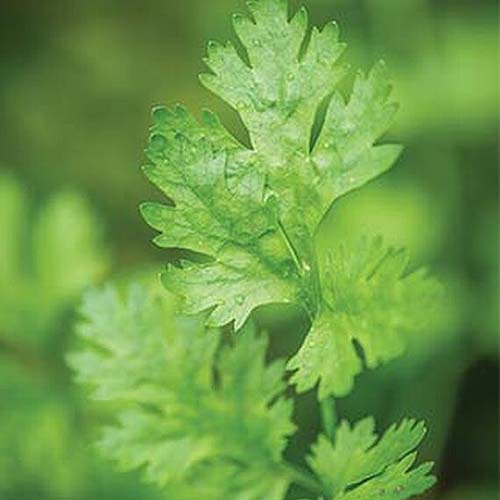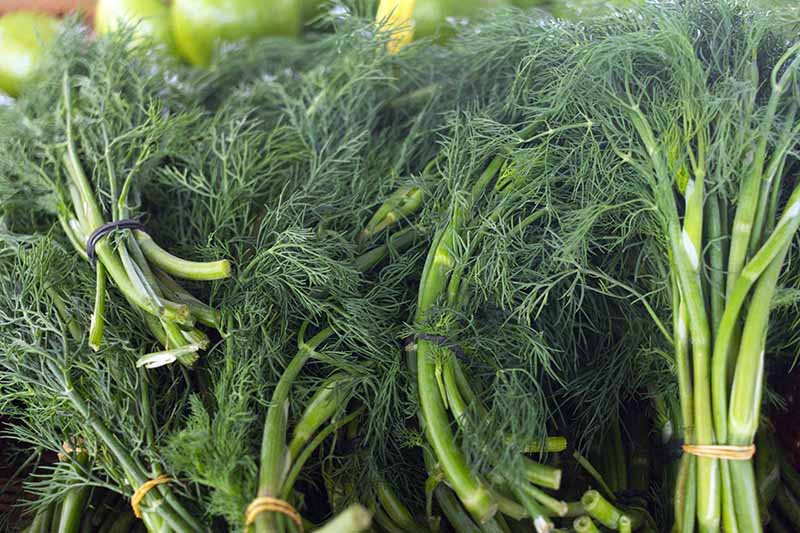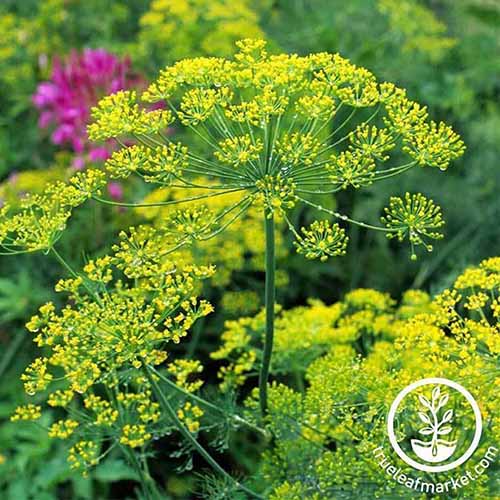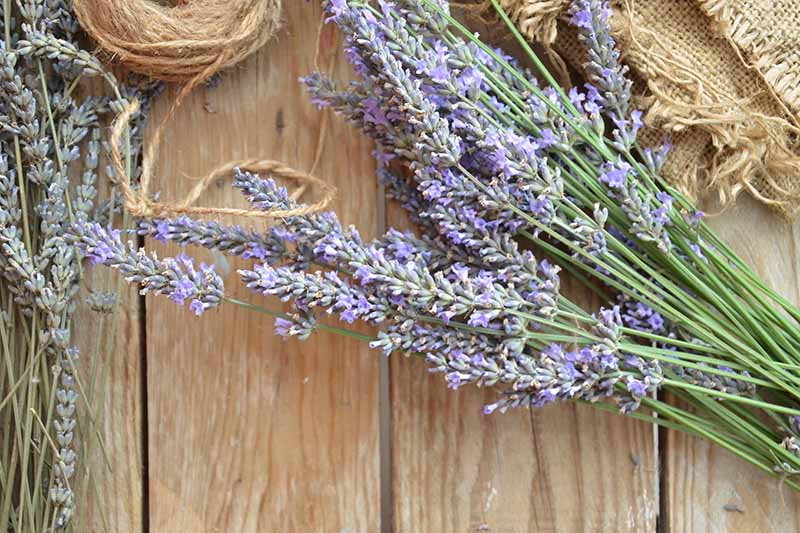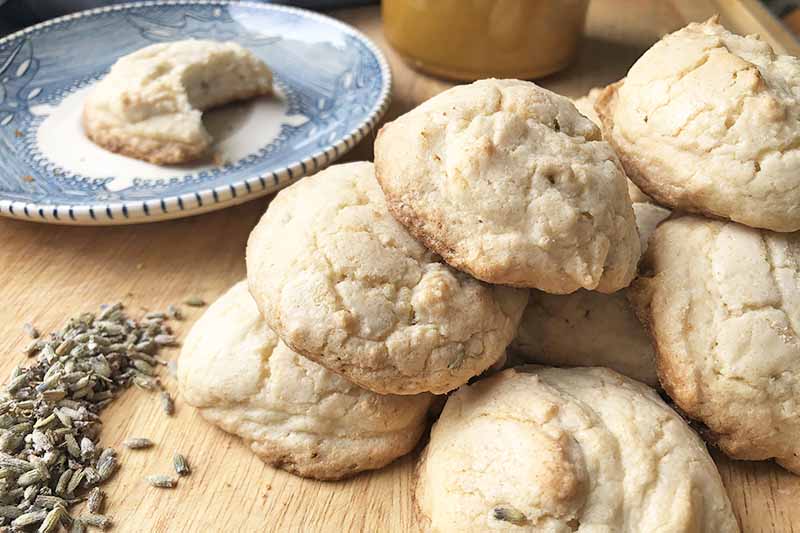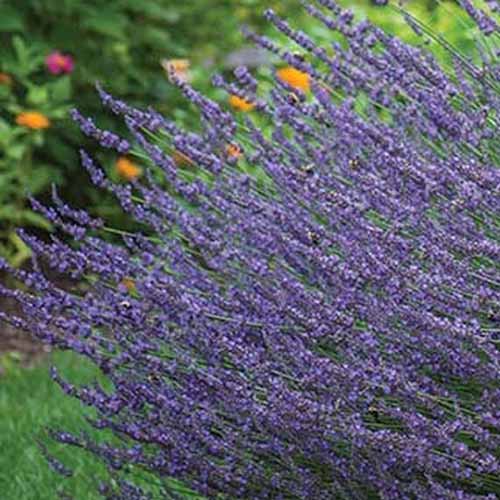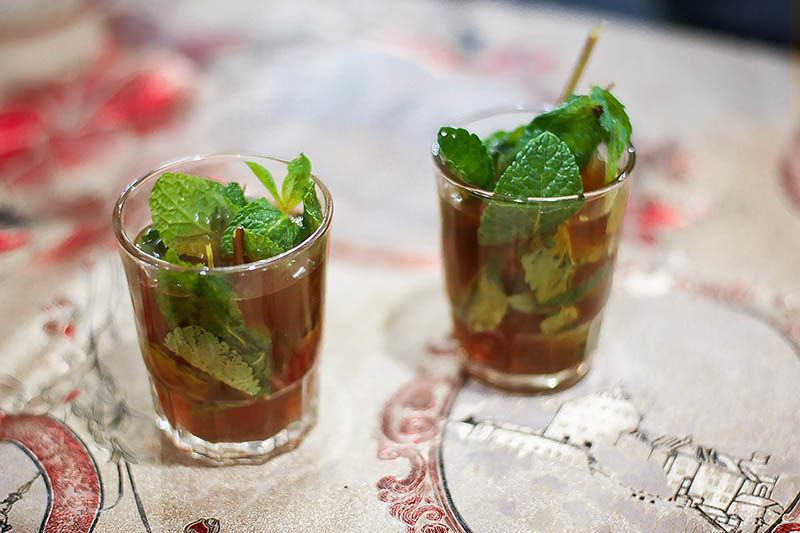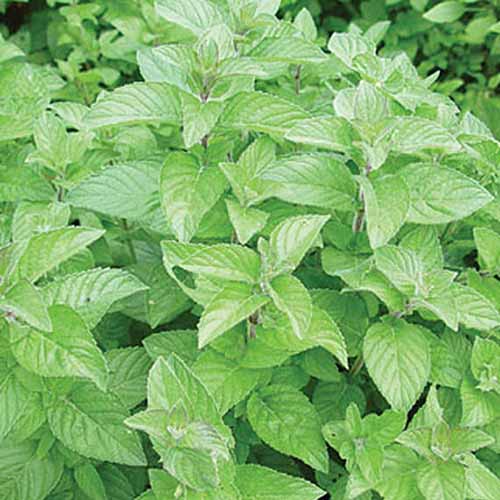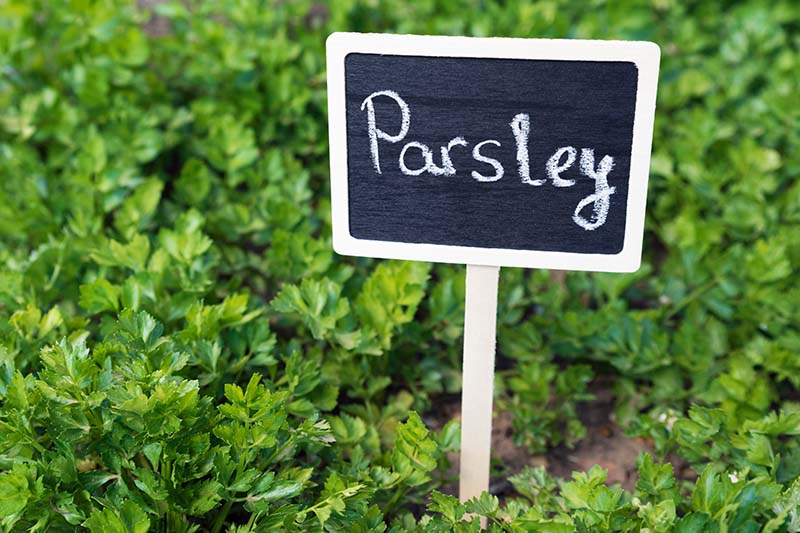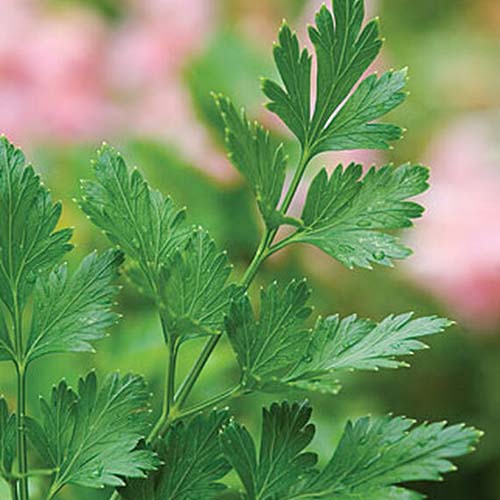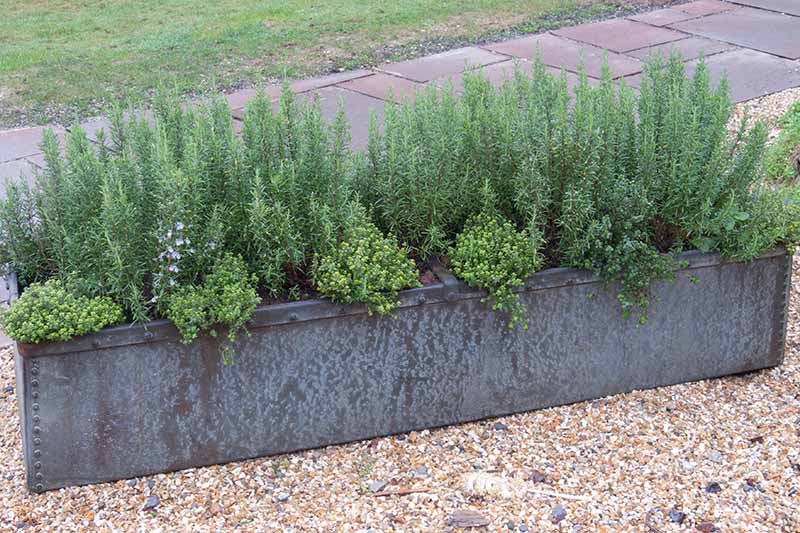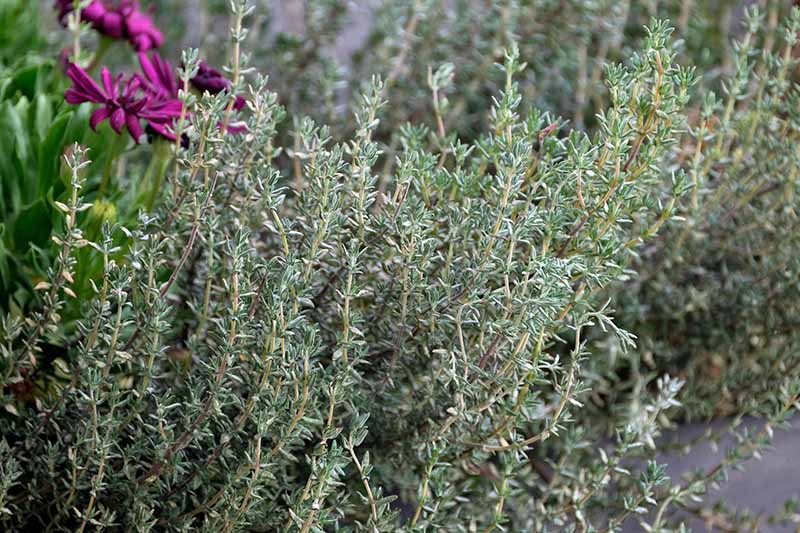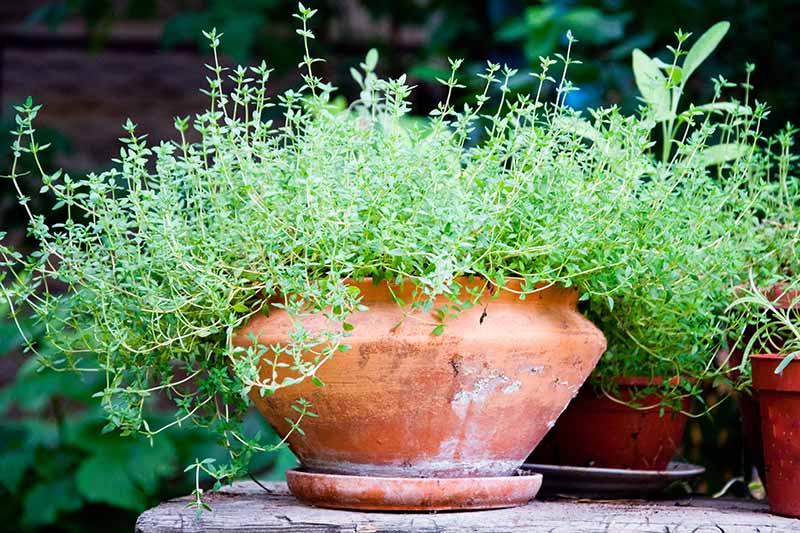And when you have fresh herbs growing in your own backyard, porch planters, or window box, this makes it even easier to boost the flavor of your homemade meals. Starting an herb garden so you can have your own fresh supply of these aromatics is the perfect gardening project for spring. We link to vendors to help you find relevant products. If you buy from one of our links, we may earn a commission. Whether you start your spring herb collection from seeds or seedlings, you have a wide variety to choose from. Some are culinary or medicinal, and others that are just nice to have around for their enticing fragrances, ornamental value, and ability to attract pollinators. Many have multiple uses.
Luckily, there are a variety of ways to grow a spring herb garden – so you’ll have lots of choices. And you can customize your project to suit your preferences, size constraints, and resources. I’ll walk you through some ideas for starting an herb garden this spring. But first, here’s an overview of what I’ll cover:
Growing Conditions
Before you pick out a selection of your favorite herbs, make sure you have the right growing conditions available to help them prosper.
Sun
Most herbs need full sun, so pick the right location – one that receives at least 8 hours of direct sun per day.
Sometimes a spot in your yard can appear to have full sun – until later in spring when the trees finish leafing out, and the same spot is suddenly plunged into shade for most of the day. Make sure you pick a spot that will have enough sun available for your plants, even once your trees finish leafing out.
If you have the perfect spot for your spring garden project but it is located in partial shade, be sure to check the sun requirements for each of your choices – some may work in partial shade, such as bay laurel, lemon balm, mint, and parsley.
Soil
In addition to requiring full sun, herbs need soil with good drainage.
If your garden soil doesn’t drain well, you can amend it – or consider going with raised beds or containers instead of putting your herbs directly into the ground. Most herbs prefer soil that has organic matter such as compost incorporated into it, and a slightly acidic to neutral pH between 6.0 and 7.0. If you decide to start your spring herb garden in raised beds or containers, you can use potting mix. If you are planting in the ground, you can learn more about your garden soil and how to improve it in our helpful article.
Water
Some types, such as basil, require more water than others. If you want to locate your spring herb garden in a dry area, such as near the curb or around a mailbox, you may wish to choose options with lower water requirements, such as sage. You’ll find information on specific water requirements for each herb below. In the meantime, if you are interested in learning more about xeriscaping – or creating gardens with very low water needs – have a look at our article on this topic.
Gardening Method
Most herbs require a full sun location and well-draining soil, and figuring out how to provide this may help you to decide what gardening method to choose.
Other constraints may include your ability or willingness to do the labor required to dig into the soil. As a native of the Southeast, I know how hard it can be to put a shovel into red clay soil! Financial constraints are also important considerations, and you may want to crunch the numbers for the various options before you get started. Luckily, there are various methods available to suit every gardener. Here are some suggesions, with their pros and cons:
In the Landscape
An herb garden can be started as a landscape feature, a border, or to create a new outdoor space.
Many herbs have ornamental as well as culinary appeal and can add texture and interest to the garden.
Pros:
Plants can double as foundational plantings. Large numbers and varieties can be included. Mass plantings can serve as borders. May be the most economical option.
Cons:
Labor is required to dig garden soil. Heavy clay soils will need to be amended. Waterlogged soils will need to be addressed.
Raised Beds
Herbs can also go into raised beds.
The number, size, and shape of the beds are highly adaptable.
Pros:
Raised format makes gardening more accessible. Large numbers and many varieties can be included. Easier to control soil drainage. No digging required. DIY raised beds are easy to make.
Cons:
Raised beds are not recommended in arid climates, where they dry out quickly. Requires purchase and/or installation of raised beds and soil.
Herb Spiral
Another option that can be installed either in the ground or above ground is an herb spiral, a permaculture-style herb gardening method.
This method gives you an attractive, rustic look in a small area of your yard.
Pros:
Accommodates a large selection in a small space. Raised herb spirals can make it easy to control soil drainage. Good way to repurpose stones or bricks.
Cons:
Requires installation.
Planters
Planters are another option, and these can be designed for maximum visual impact.
Available in a variety of colors and materials, you can find a style to suit your garden or patio.
Pros:
Quick to install. Easy to move to the best location. Can be brought indoors to overwinter tender aromatics like lemongrass. Can combine various herbs in the same container. Planters come in many sizes, making this is an adaptable gardening method.
Cons:
Containers may dry out quickly. Selection is limited, due to smaller space.
Window Boxes
Window boxes are containers that are designed to be installed below your windows.
They may also serve as a wonderful way to add some interest to your balcony or deck.
Pros:
Great option for those living in an apartment or condo with no yard. Window boxes beautify your neighborhood, and your view. Can be brought indoors to overwinter.
Cons:
Window boxes may dry out quickly. Selection is limited, due to smaller space.
Arrangement of Potted Herbs
In addition to planters and window boxes, individual terra cotta or plastic pots can be arranged for a pleasing visual effect.
An ideal choice for patios, decks, and other small spaces, you can intersperse your potted herbs with flowers for added visual appeal.
Pros:
Quick to install. Inexpensive. Easy to move to the best location. Can be brought indoors to overwinter.
Cons:
Pots may dry out quickly.
Check out our full guide to learn more about how to grow herbs in pots and containers.
Seeds or Live Plants
Many herbs can be started as seeds. Some can be started indoors and then transplanted to the garden, and others can be sown directly into your soil.
While growing from seed is more cost efficient overall, be aware that if you start your new spring herbs this way, you may not be able to harvest them until next year.
If you want the instant gratification of herbs you can use starting this spring, you might want to start with live plants instead of seeds.
Herbs to Include
Aromatics can be used for cooking, as herbal teas, and medicinally. Some are simply grown for their fragrance or as ornamental plants. While some may be associated more with one of these purposes than another, most have multiple uses.
Once established in your garden, some of these will provide you with a flavorful harvest starting in early spring each year. Some may be grown as perennials in certain areas, and others self-seed readily. When deciding which herbs to include, think about which ones you enjoy – and which you would like to be able to experiment with.
Basil
While basil is largely associated with summertime and fresh tomatoes, in many places this culinary superstar can be grown starting in springtime. Just make sure you wait until after your last frost to set basil plants out. Basil is a fast-growing annual – unless you live in Zone 10 or higher, where it can be considered a perennial.
Basil has a distinctive, pungent taste, with some varieties having citrus or anise undertones. It is widely used in Italian cuisine. Basil will perk up a plate of sliced summer tomatoes, or it can be used fresh, minced over sauteed zucchini or grilled fish. But basil really shines when it’s used in homemade pesto.
Sound tempting? Check out this recipe for lemon basil pesto from our sister site, Foodal. Basil requires well-drained soil, full sun, and frequent watering to thrive. Most varieties grow 10-18 inches or taller. If you’re ready to try growing your own basil from seed, ‘Italian Large Leaf’ is a great option.
‘Italian Large Leaf’ Basil Its large leaves are perfect for making pesto – or for layering with tomatoes and fresh mozzarella. You’ll find organic ‘Italian Large Leaf’ seeds in packs of various sizes at True Leaf Market. You’ll find all you need to know about this flavorful herb in our basil growing guide. and you can find many different basil varieties to choose from here.
Bay Laurel
Bay laurel is one of the staples of the aromatics department. It is frequently called for in recipes to flavor soups, dried bean dishes, and stews. It is one of the essential ingredients in a bouquet garni.
The leaves of bay laurel, typically used dried, are cooked over a long period of time to infuse a dish with a subtle flavor somewhat reminiscent of oregano or thyme. Bay laurel prefers full sun and good drainage. It is best planted in the spring. While it can grow to tree size if left unpruned, bay laurel is usually kept trimmed to a size of 2-8 feet.
Bay laurel is hardy to Zone 8, and it can be overwintered indoors in colder zones. Its leaves are evergreen, and it makes a gorgeous ornamental, looking lovely in decorative pots and planters.
Bay Laurel You can find live bay laurel plants available for purchase at Burpee. Ready to learn more about growing this culinary staple? We have a complete gardening guide dedicated to bay laurel.
Chamomile
Perhaps most well-known as a calming herbal tea, chamomile can be included in your spring herb garden, too. The flowers of this aromatic are what is used in the tea – and they have a mild, floral flavor.
But chamomile’s uses go beyond herbal tea. Chamomile is also medicinal, with a huge range of properties. It is considered anti-inflammatory, wound-healing, anti-microbial, and has many other health-promoting characteristics, as well. Chamomile prefers full sun, but it will tolerate partial shade.
This herb needs well-drained soil and regular watering. Roman chamomile, a perennial, is low-growing and can serve as a ground cover, while German chamomile, an annual, grows up to 2 feet tall. Both types do well in containers.
German Chamomile Seeds If you’re interested in producing a supply of your own homegrown, fresh chamomile flowers for teas, you can find German chamomile seeds from True Leaf Market.
3 Chamomile Plants Or if you’d rather get a jumpstart, Burpee has German chamomile plants available, in sets of three. If you’d like to learn more about adding this calming herb to your garden, have a look at our chamomile growing guide.
Chives
Chives may be every gardener’s dream for a low maintenance plant that is both beautiful and edible – and available to harvest every year, starting in spring. You are probably familiar with its long, tubular leaves – commonly seen chopped as a baked potato topping.
This allium, relative to both onions and garlic, can be used as a substitute flavoring for those two ingredients. Garlic chives taste just like garlic, and plain chives have a very oniony flavor. Chives are delicious in pad thai, minced over scrambled eggs, or as a garnish on roasted potatoes. In fact, chives are such an amazing ingredient, we have a whole guide dedicated to its cooking and medicinal benefits at our sister site, Foodal.
Chives do best in full sun but will tolerate partial shade, and like most of the other selections on this list, they need well-drained soil and consistent watering. Chives tend to grow to 1 foot tall and have a similar spread. Perennial in Zones 3-9, it’s safe to plant directly in the ground, but growing chives in containers is also an option.
In late spring, chives put forth beautiful purple flowers – which are just as edible as their leaves. Pollinators also appreciate their flowers.
Chives If you’d like to include chives in your herb collection (and why wouldn’t you?) you can find packs of 1,000 seeds, or packs of three live plants for purchase at Burpee. Chives are easy to grow – learn more about the entire process in our complete guide.
Cilantro
Cilantro is cold hardy and can be sown directly in your soil before the last frost, providing a spring harvest. If you haven’t cringed and quickly scrolled down yet, you must be a cilantro lover and not a cilantro hater – and you’re in good company!
Found frequently in Mexican, Asian, and Indian cuisine, this herb has a unique, bright flavor, which the haters think tastes like soap. Cilantro can be sprinkled on bowls of beans and rice, used to add some zest to a mac and cheese dish, or as the main ingredient in a non-traditional pesto. Our sister site, Foodal, has a delicious recipe for cilantro cayenne tahini sauce, which would be good on just about anything in your pantry or fridge. Cilantro prefers full sun, but it doesn’t mind some light shade in the afternoon. It grows nicely in well-drained garden soil, and doesn’t like to be overwatered once established. Cilantro can grow 12-24 inches tall.
If you’re ready to try cilantro in your own home garden this spring, starting it from seed is easy and gratifying.
‘Calypso’ Cilantro ‘Calypso’ is a variety that is extremely slow to bolt, meaning even more leafy cilantro love for you through the season. You can find ‘Calypso’ as either seeds or plants from Burpee. If you’d like to perfect your knowledge of adding this versatile yet flavorfully controversial plant to your garden, we have you covered – see our complete guide to growing cilantro.
Dill
Another cold hardy option for spring, dill is just as easy to grow from seed as cilantro. This aromatic is used for both its fragrant leaves and its tasty seeds.
Dill has a bright taste with anise undertones. It’s used to flavor dill pickles, but it also tastes great in potato salad, and on salmon. One of my favorite flavor combinations with dill is to use it on broccoli. If that sounds good to you too, check out this recipe for roasted baby broccoli with dill. It’s on our sister site, Foodal.
Dill requires full sun, and moist, well-drained soil. Make sure to add compost to your soil before sowing, because dill does best when started in soil enriched with organic matter. Dill is tall and wispy, reaching 2 to 4 feet tall.
‘Bouquet’ Dill It’s best to sow dill seeds instead of transplanting live plants, which don’t always transition well. And in any case, growing this wonderful herb from seed is easy. You can find ‘Bouquet’ dill seeds from Mountain Valley Seed Co. at True Leaf Market. Read our complete dill growing guide here.
Lavender
While it may not be used in the kitchen as often as many other selections on this list, lavender is well-deserving of a spot in any herb garden. This small perennial shrub has a calming floral scent, as evidenced by its widespread use in aromatherapy.
And if you like the smell of lavender, you may also appreciate its taste. Lavender flowers can be used to make tea, lemonade, and even ice cream – a unique treat that’s common in the South of France, where lavender farming is an important industry. You can also use dried lavender flowers in cookies. If that sounds like something you need to try right now, there’s a recipe on Foodal for lavender cookies with vanilla and almond. Lavender grows best in full sun, and in soil that is sandy, alkaline, well-drained, and has been amended with just a little compost. You are more likely to harm this plant with too much water rather than too little. Water once or twice a week until plants are established. Mature plants are drought tolerant, but should be watered more frequently when flowering – once or twice a week, the same as what’s recommended for young plants.
Lavender makes an excellent border when used in mass plantings, or it makes an excellent foundation plant, since its leaves are evergreen.
‘Phenomenal’ Lavender ‘Phenomenal’ is a hardy cultivar that stands up to both humid heat and cold winters – it will thrive in Zones 5-9. It grows to 2-4 feet tall and wide. If you’re ready to add the calming benefits of lavender to your spring herb garden, you’ll find live ‘Phenomenal’ lavender plants available for purchase at Burpee. Learn all you need to know about planting and caring for this fragrant Mediterranean plant in our complete lavender growing guide.
Mint
Mint is bright, peppery, and full of zing – the perfect flavor to cool things down when spring starts to heat up.
This plant exists in a huge range of varieties – spearmint, peppermint, apple mint, pineapple mint, chocolate mint… I’m pretty sure the list is endless. Mint is a widespread culinary ingredient. It’s used as a key ingredient in the Middle Eastern dish tabbouleh, is often served with lamb, and is used to make refreshing North African style mint tea.
The leaves of the plant can also be dried and used to make homemade herbal teas with a variety of ingredients from the garden. Mint is hardy in Zones 3-8, where it will thrive with full sun to partial shade, well-drained soil, and irrigation with 1-2 inches of water per week. Mint will spread aggressively if it is not contained.
Spearmint If you want your own fresh supply of this herb for making mint juleps or refreshing herbal teas, you can find spearmint for purchase in packs of seeds, or sets of three plants, at Burpee. To find out how best to enjoy your this herb while keeping it under control, see our complete guide to growing mint.
Parsley
What’s curly, green, and loaded with vitamin C? Parsley, that’s what. Well, unless we’re talking about the flat leaf variety, that is. You wouldn’t guess that this herb, typically relegated to garnish status, was so chock-full of vitamins. It’s the perfect thing to help you boost your nutrition in spring.
Parsley has a flavor that is bright, earthy, and slightly bitter. It mixes well with lemon juice, as in tabbouleh, where it joins mint and tomatoes in a veritable celebration of flavor. Parsley also tastes great with potatoes when they are fried, mashed, or hashed. And like basil, when you have lots of parsley on hand, you can turn it into pesto. By the way, there’s a recipe over at our sister site Foodal for an einkorn-crust pizza that uses parsley pesto as a saucy base. You don’t want to miss it! Parsley should be grown in full sun, but it will tolerate partial shade, and prefers rich, well-drained soil. Mature plants should be watered deeply once a week or more, and mulched to prevent the soil from drying out.
Parsley is a cold hardy biennial that can grow up to 2 feet tall, depending on the variety. There are two basic types of parsley – flat leaf and curly leaf. Flat leaf varieties are said to be more flavorful.
‘Single Italian’ Parsley ‘Single Italian’ is a flat leaf cultivar that grows to 18 inches. To ensure you’ll have a fresh supply of homegrown parsley at the ready, you can find ‘Single Italian’ flat leaf parsley for purchase as plants or seeds at Burpee. You can learn more about the finer points of gardening with parsley in our growing guide.
Rosemary
If it doesn’t bring to mind bees buzzing from flower to flower, rosemary may make you think of a popular song from the 1960s. Ever wonder why Simon and Garfunkel sang about this plant? Learn about the history behind the combination of parsley, sage, rosemary, and thyme.
Like lavender, rosemary is a small evergreen shrub with small, beautiful flowers, and a lofty fragrance. However, rosemary has a more common place in kitchens and cookbooks than lavender, with a taste reminiscent of both pine and lemon. It is used both fresh and dried, and goes well with roasted foods, including roasted meats and root vegetables. It’s also a delicious flavoring for focaccia, breadsticks, or homemade crackers. When you have large, established plants, you can snip some of their sturdier branches to use as fragrant skewers for grilling your favorite vegetables or protein.
Rosemary grows well in neutral or slightly alkaline soil, and needs excellent drainage. It requires full sun, and should only be watered when the top inch of soil is dry. For rosemary, overwatering tends to be more of a problem than underwatering. Like lavender, rosemary works beautifully as a border when used in mass plantings, and can be used as a foundation plant.
‘Tuscan Blue’ Rosemary ‘Tuscan Blue’ is a large variety, reaching a height and spread of 5 feet. You’ll find packs of three ‘Tuscan Blue’ rosemary plants for purchase at Burpee. Learn more about using this fragrant and elegant plant in your garden in our rosemary growing guide.
Thyme
A low-growing herb, thyme is a perennial that is delicious in the kitchen, and works beautifully as a ground cover.
Thyme has a subtle, earthy flavor with a hint of mint. There are many varieties of thyme, though, so some may have other pronounced flavors as well, such as the citrusy taste in lemon thyme. This aromatic works well in many types of savory dishes – from roasted vegetables, to stew, to pasta. In fact, we have an entire guide dedicated to cooking with thyme at our sister site, Foodal. Thyme needs full sun and well-drained soil. (Have you noticed a pattern yet?)
This plant has low water needs, is drought tolerant, and should be allowed to dry out between waterings. Most varieties reach 6-10 inches in height, making thyme an excellent choice as a live edging. Some varieties are prostrate, and look lovely planted between paving stones or in rock gardens.
Common Thyme Common thyme grows to 6-12 inches tall and has a spread of 6-8 inches. You can find common thyme seeds and plants available for purchase at Burpee. Want to know more? Read our thyme growing guide now.
Let the Good Thymes Roll
Yes, you’re now ready to let the good thymes, and mints, and basils roll from your very own herb patch right into your kitchen and onto your plate this spring. Just remember to pick a good location with plenty of sunlight, well-draining soil, and use the gardening method that will work best for you. And of course, pick a selection of herbs that you love.
My spring herb garden is stocked with chives, mint, dill, and cilantro, some of my favorite aromatics to use in meals. What about you? Which herbs are going to make the cut and end up in your spring herb garden this year? And now that you’re ready to grow your own herb garden this spring, how about growing your own spice collection too? We have articles to help you with that:
How to Plant and Grow Caraway How to Plant and Grow Anise How to Grow and Care for Cumin in Your Garden How to Plant and Grow Ginger in Your Home Garden
Photos by Fanny Slater and Meghan Yager © Ask the Experts, LLC. ALL RIGHTS RESERVED. See our TOS for more details. First published on January 3rd, 2015. Signigicantly updated and expanded on April 25th, 2020. Product photos via Burpee and True Leaf Market. Uncredited photos: Shutterstock.
